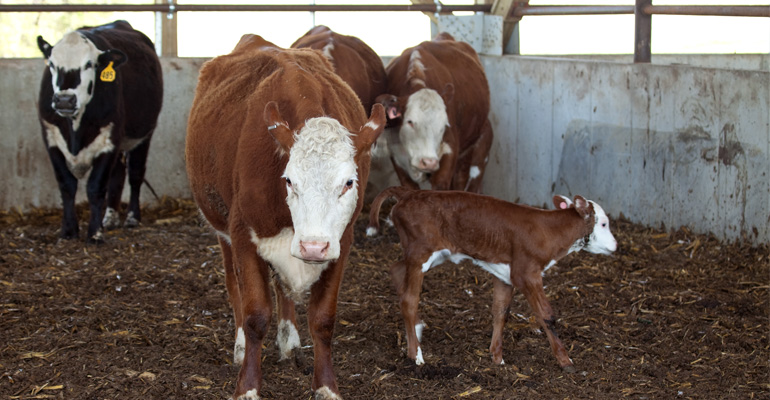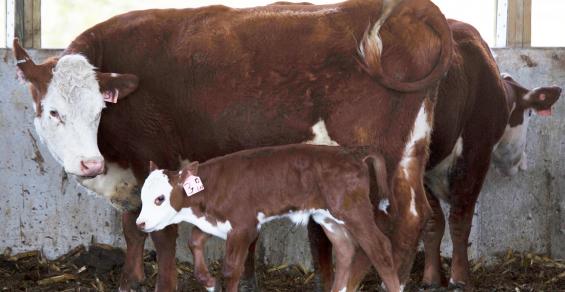Look around and you’ll see more and more Midwestern cow-calf producers moving their herds to part-time or year-round indoor facilities. Why are they doing this? And how does that make financial sense?
According to a new White Paper Best Management Practice Considerations for Cows in Intensively Managed Indoor Systems by Dr. Lemenager, Purdue University (with content contributors from leading experts in the private sector as well as the major land grant universities), today’s cow-calf producers cite the rising cost of pasture, as well as its reduced availability, as key influences in their decisions.
According to the paper, proper facility design and management may yield longer cow life, improved feed efficiency and pasture savings, as well as reduced calf mortality and higher weaning weights.
Producers are also experiencing how a cow-calf shelter, along with good management, can reduce labor costs and improve efficiency in estrous synchronization and timed artificial insemination (AI), leading to improved conception rates. And for many, moving the operation indoors facilitates two or more calving seasons to capitalize on higher seasonal prices
Other related benefits cited in the paper include increased cow salvage weight and value, as well as the harvest and controlled application of the nutrient value of the manure on row crops.
The paper also discusses several factors a cow-calf operation will need to weigh when considering building a cow-calf shelter, including the cost of the facility, land use, cropping practices, herd genetics, managing cow behavior, disease risk mitigation and bio security.

Ready to find out more?
Download your own free copy of the White Paper Best Management Practice Considerations for Cows in Intensively Managed Indoor Systems (by Dr. Lemenager). Or, you can request a copy by calling 800-213-0567.
Be sure to download your copy today and get information on disease management, animal behavior, ventilation, bunk space, pen configuration and lots more.




Leave A Comment